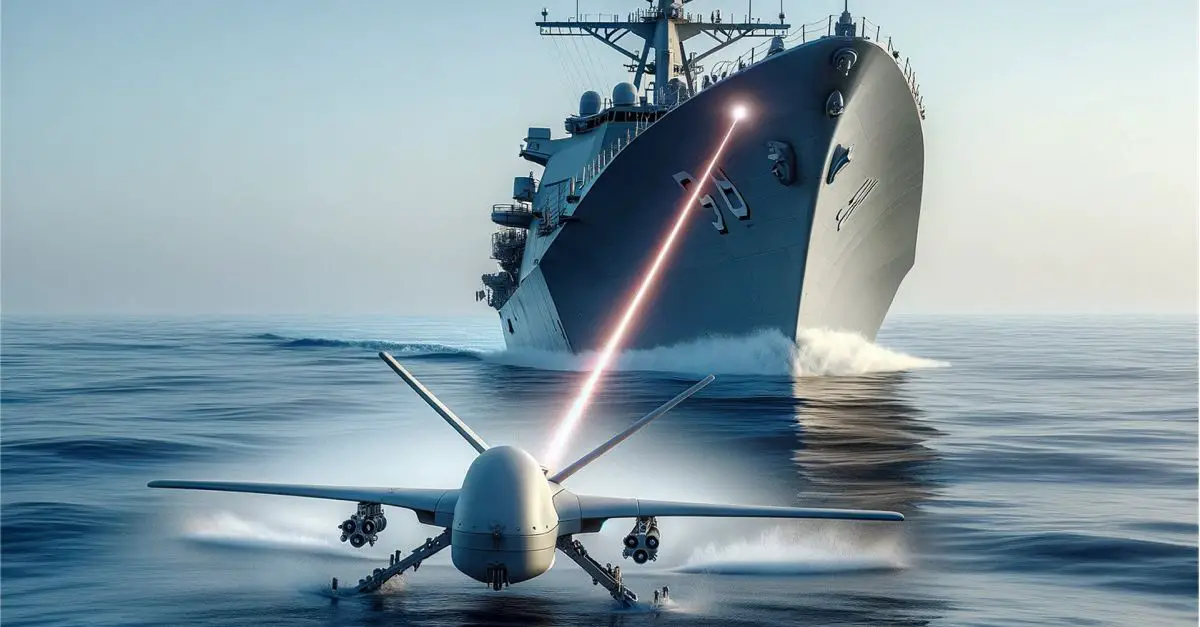Breaking news
US Navy official questions costs of asymmetric warfare in Red Sea.
In a lecture given by ADM Christopher vice chairman of the Joint Chiefs of Staff on 2 May 2024 at the Center for Strategic & International Studies, he raised very directly the question of the blow in the war being waged by the US Navy in the Red Sea against the Houthis.
Follow Army Recognition on Google News at this link

Artist rendering of a US Navy ship destroying an unmanned system with her laser system. (Picture source: French MoD)
Western naval forces face a significant challenge in countering asymmetric threats posed by unmanned systems, and they are exploring various technologies to address this.
Directed Energy Weapons (DEWs), such as lasers, provide a potential cost-effective solution for countering unmanned threats.
Lasers have high precision and can engage multiple targets rapidly, using concentrated beams of light to disable or destroy drones and small unmanned vessels. The key technical advantage is the "unlimited" ammunition supply as long as electrical power is available.
The U.S. Navy has developed laser systems, such as the AN/SEQ-3 Laser Weapon System, capable of targeting small boats and drones effectively.
Electronic warfare focuses on disrupting the control and communication of unmanned systems. Jamming and spoofing techniques interfere with the enemy's ability to navigate and control their unmanned systems, effectively neutralizing the threat.
These soft kill tactics use electronic signals to disable or deceive enemy drones or vessels without physical destruction. This approach is technically challenging because it requires sophisticated detection and analysis of enemy signals.
A multi-layered defense system integrates several layers of detection and defense mechanisms to counter unmanned threats.
The layers typically include surveillance, reconnaissance, interception, and countermeasures. Unmanned Escort Vessels (UEVs) are used to provide early warning and interception of threats, while aerial surveillance drones offer additional situational awareness.
The U.S. Navy's approach often combines manned and unmanned systems to provide a comprehensive defense. The key technical challenge is integrating these systems effectively to maximize their collective capabilities.


























